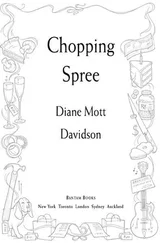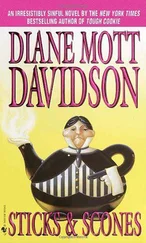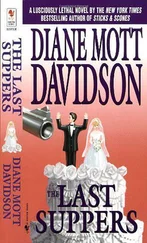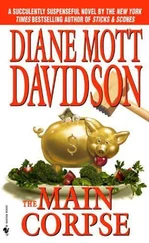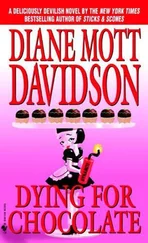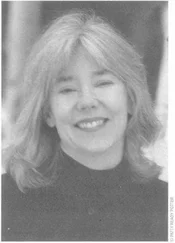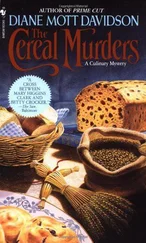3½ to 4 cups all-purpose flour
¾ cup sun-dried cranberries
1 cup chopped pecansButter a 10-inch tube pan; set aside. In a large mixing bowl, combine the yeast, one teaspoon of the sugar, and warm water. Set aside for 10 minutes. Combine the milk, butter, oil, zest, remainder of the sugar, and salt, and stir into the yeast mixture. Add the egg yolks, stirring well Add the flour ½ cup at a time, stirring well after each addition, to incorporate the flour thoroughly. Knead 5 to 10 minutes, until the dough is smooth, elastic, and satiny. Knead in the cranberries and pecans. Put the dough back in the bowl, cover the bowl, and let the dough rise at room temperature until it is doubled in bulk. Using a wooden spoon, beat down the risen dough for about a minute.Place the dough into the buttered tube pan and allow it to rise at room temperature until it is doubled in bulk.Preheat the oven to 375°. Bake the bread for 45 to 50 minutes or until it is dark golden brown and sounds hollow when tapped. Place on a rack to cool or serve warm. Once cooled, the bread is also excellent sliced and toasted. Makes 1 large loaf
In terms of money, though, these days Tom took great pleasure in setting aside funds for Arch and Julian, whom he referred to as the kids, the guys, the boys. Our boys. And he didn’t want any more children, he said when I asked. Two were enough. Which was fine by me. But now our two boys had college funds, savings funds, Christmas funds. All generously supplemented by Tom, who took a childlike pleasure in giving.
I set aside new egg whites for the fudge cookies, then mixed the butter, milk, and egg yolks into the yeast starter. I stirred flour into the rich, flaxen-colored mixture until it was thick. Once I started to knead the dough, I thought back to the second phone call from Tom this morning. He did/did not want me involved in the investigation. He wanted me to think about it. He wanted me to be willing to back off once I’d brought my great intellect to bear. I had helped him before, when an attempted poisoning closed down my catering business, then again when Julian’s mother was involved in some bizarre crimes, and again when Arch’s and Julian’s school was the scene of homicides. When Tom was kidnapped this spring and our local parish had been turned upside down by crime, I had thrown myself into the investigation with every ounce of my will. Sometimes the sheriff’s department welcomed my involvement; occasionally, they did not. At least Tom asked for my opinion, even respected it, I thought with a wry smile. He had always treated me as a resource. But unknown to him, I was very sensitive about the issue of offering my thoughts.
My vulnerability came from interaction with Husband Number One. Dr. John Richard Korman not only disliked hearing any of my opinions on things medical, he resented my occasional input. In one case, expressing my ideas had backfired so appallingly that I’d never ventured another word about his work.
I pushed the bread dough out, folded it over, pushed it out, and recalled the freckled face and wiry red hair of Nashville-born Heather Maclanahan O’Leary. She and her husband had been newcomers some years ago to Aspen Meadow and St. Luke’s Episcopal Church. Heather had become pregnant with her first child almost immediately after arriving in Colorado. But in her first trimester she was so debilitated by anemia and homesickness for Tennessee that the parish had started to send in meals, coordinated daily by yours truly.
John Richard was Heather’s obstetrician. He worried aloud about the fact that her red blood cell count didn’t seem to be improving even with standard doses of iron. I brought the O’Learys their first supper—a cold roast beef and spinach salad with Dijon vinaigrette that I secretly thought of as my Ironman Special. Heather had been so happy to see me, so grateful to have a new friend, she’d insisted I stay for tea. When our teacups were empty, she showed me the nursery her husband was painting, then she proudly pointed to the framed pictures of the Maclanahan and O’Leary clans. She was going to hang this pictorial album around the baby’s crib, so that the newest O’Leary would grow up with what Heather called “ancestor appreciation.” I’d acted more interested than I really was, until one photograph caught my attention.
“Who’s that?” I pointed to an old, formally composed photograph of a couple. A very pale man—an Irishman?—stood behind a dark-haired, dark-complected woman.
“Oh,” said Heather with a small laugh, “that’s Grandfather Maclanahan and Grandma Margaretta. He was an importer and had to travel to Italy every so often. He met Margaretta on a trip to Rimini, and fell in love with her because of her great Tortellini Delia Panna. Whoever heard of an Irishman smitten by pasta?”
I stared at the picture with a prickly feeling. In those days, before I had a catering enterprise to keep me busy, I spent hours reading magazines. Friends said I was like a walking Reader’s Digest , especially when it came to food and medicine. When Heather was telling me about her grandmother Margaretta Sanese Maclanahan, I remembered an obscure article on genetic diseases similar to sickle cell anemia. I offhandedly asked Heather if she’d ever been tested for thalassemia, a blood disorder common among people from Mediterranean countries. She looked puzzled and said no. That night I mentioned to John Richard the possibility that Heather could be a carrier of this genetic blood disease. As a carrier rather than an actual thalassemic, Heather’s disorder might have manifested itself only in pregnancy. With a genetic irregularity of that kind, Heather and her husband should both be tested, I said, in case the infant would have full-blown thalassemia.
Well. John Richard hooted. He scoffed. He laughed until the tears ran down his handsome cheeks. Where did you go to medical school? he wanted to know. Then he even called one of his buddies to cackle, Listen to the little wife’s diagnosis .
The denouement wasn’t pretty. John Richard refused Heather’s request to be tested for thalassemia. She went to an ob-gyn in Denver who did the blood analysis—a very simple one, as it turned out—and confirmed the diagnosis. My diagnosis. Heather’s husband was tested—he did not carry the gene. The new doc pumped lots more iron into Heather than she’d been getting, she began to feel better, and she gave birth to a normal baby girl.
I was rewarded with a black eye.
I set the dough aside to rest. Here I was, years later, understandably ambivalent about sharing my ideas. Unfortunately, with my personality, once somebody presented me with a problem, I felt duty bound to jump in and help solve it. Arch sometimes resented this fiercely, of course, and I had painfully learned to let him take care of his own messes. Whether Julian felt the same way, I was not sure.
I kneaded the cranberries and nuts into the silky dough, gathered the whole thing up, and nestled it into a buttered bowl. Time to have some espresso and put the past aside.
As the coffee machine was heating up, Arch appeared in the kitchen with Scout draped over his shoulders. Once the dark liquid began its noisy spurt into shot glasses, Scout leapt to the kitchen floor.
“Jeez, Mom! You scared him!”
I steadied the shot glasses under the machine’s twin spurts. “It’s not as if he hasn’t heard this machine a thousand times before.”
Arch watched the ten-second process in silence. After I stopped the flow of water, I poured the espresso into a small cup.
“Gosh!” he exclaimed. “All that noise, and that’s all you get?”
I sipped the strong coffee and let this pass. “Is Julian up yet?”
Arch knelt on the kitchen floor and tried to attract the cat. Scout, however, wanted a fresh bag of cat food. This he indicated by standing resolutely next to his bowl, which held only undesirable, four-hour-old food. Receiving no response in the meal department, Scout sauntered across the floor and rolled onto his back. Arch enthusiastically rubbed his stomach.
Читать дальше


